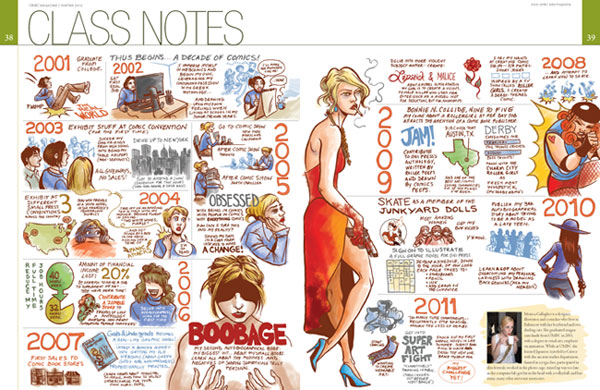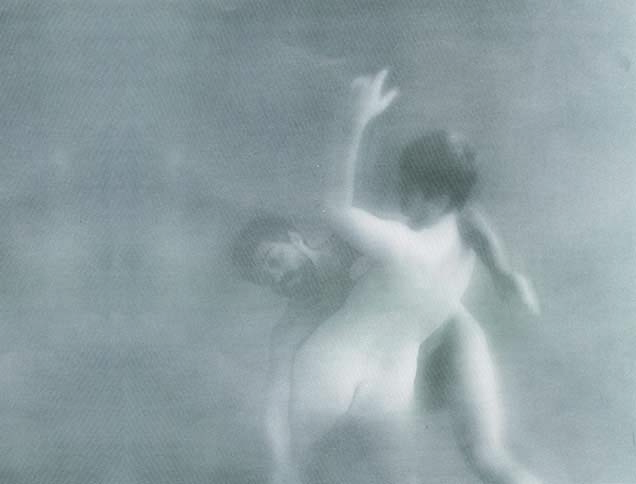SWEET RELIEF?

Think of sugar and you likely think of the tasty treats to which they lend sweetness – candies and soda and ice cream – or the way that a spoonful of it helps the medicine go down.
But sugars have a potential medical role past helping Mary Poppins get some bitter but healing syrup down the hatch. Certain complex sugars, known as polysaccharides, can also play a role in improving the health of children according to UMBC researchers.
Polysaccharides are attached to the outside of bacteria. These polysaccharides come in different types (or flavors, if you like), and wave around on the surface of a bacteria’s coating like trees in a breeze.
The polysaccharide type can determine how serious an illness will be in the bacteria’s human host. Some sugars in the outer coat of the bacteria mimic the sugars on the surfaces of human cells, making it difficult for immune cells to seek out and destroy them. Other bacteria have polysaccharides in their coats that immune cells recognize and treat as foreign invaders, marking the invading bacteria for destruction.
“These complex sugars play an important role in [bacteria] talking to the outside world,” says Allen Bush, a professor of biochemistry at UMBC. “They interact with antibodies, creating immunity in the patient when used in a vaccine.”
Scientists need to better understand the structures of polysaccharides in order to fully exploit their potential role in vaccine development. Here at UMBC, Bush and his colleagues have already discovered the chemical structures of five key polysaccharides attached to the Streptococcus pneumoniae bacteria and published their findings in The Journal of Biological Chemistry.
Bush observes that knowing these sugars’ structure is especially promising for children’s health. Pneumonia vaccines used for adults are composed only of polysaccharides, but those same vaccines don’t work in children, who respond to vaccines that combine a polysaccharide and a protein. Drug companies need the detailed understanding of polysaccharide structure that Bush and his fellow researchers are providing to fashion those vaccines.
Determining that structure required a bit of technology. Bush and his colleagues dissolved a small polysaccharide sample in a liquid known as “heavy water” – a form of water that, because of its molecular properties, is heavier than regular water. The researchers then put a tiny fraction of the dissolved sample in a small tube and placed it inside a Nuclear Magnetic Resonance (NMR) machine. This instrument (about the size of a small subcompact car) operates on principles similar to those involved in now-familiar Magnetic Resonance Imaging (MRI) techniques used to detect human ailments. Performing NMR on a polysaccharide is like using an MRI machine on a molecule.
“The resulting structures were surprising,” says Bush. “We just didn’t understand a lot about polysaccharide assembly. The current technology for identifying the bacterial types relies on genetic and antigenic methods that give rise to a lot of mistakes and misleading information about their structure.”
Bush says there are at least 90 recognized distinct pneumococcal types and the detailed chemical structures of many of them still are not accurately known. But using NMR, Bush hopes his team and other scientists will give vaccine developers new tools to make their vaccines even better – and the children who get those vaccines healthier.
— Nicole Ruediger
SIEGE MENTALITY
The Siege of Sziget is among the great works of Renaissance Europe, but you probably haven’t ever heard of it.
Likely that’s because this verse narrative of an epic battle between Ottoman invaders and embattled Christian defenders of the city of Sziget – written in Hungarian by Count Miklos Zrinyi and first published in 1651 in Vienna – has never been translated into English until this year, when Laszlo Korossy, a graduate student in UMBC’s public policy program, had his version published by The Catholic University of America Press.
The translation was a labor of love for Korossy, who became intrigued by the poem as a child and spent a number of years working on his version before finding a home for it at the university press run by his alma mater. (He has a B.A. and an M.A. from Catholic University of America.) He arrived at UMBC this year to pursue his interest in researching the “megalopolis” phenomenon with John Rennie Short, a UMBC professor of public policy and one of the world’s foremost scholars on urban issues.
“The text attracted me,” he says, “because it was so unlike anything I had ever read.”
The Siege of Sziget is very much a product of its era. Miklos Zrinyi was a successful military leader in the wars between the Ottoman Empire and the Hapsburg Empire, and his poem refashions his own family history – notably his great grandfather Ban Miklos Zrini’s heroic but failed defense of Sziget against the Ottoman ruler Suleyman the Magnificent in 1566 – into a cosmic battle that ends in his relative’s glorious martyrdom and ascent to heavenly reward.
The Siege of Sziget is more than a work of religious devotion and anti-Ottoman propaganda. It is a key text in Hungarian literary history, filled with vivid and realistic tableaux of the warfare of that era:
Some half dead but still alive cry for their companions
Some on the horribly hard ground whimper
Between blood and arms sound the wretched appeals,
You would think from afar, that the sky had fallen.
While Zrinyi’s poem is bookended by scenes of vast cosmological drama (God sends demons to incite the Turks and then sends in angelic hordes to vanquish a demonic horde at the poem’s end), a subtle psychology is woven through The Seige of Sziget: the fierce interior battles of men fighting their pride, their anger, their lust and their grief as they wage war upon each other.
“Zrinyi is a man of humanism and a man of faith,” Korossy observes. “My own faith is important to me, and this is something I could really understand in him.”
Korossy’s grasp of the poem’s dual nature shines through in his translation of The Seige of Sziget, revealing Zrinyi to be a poet deeply in touch with life’s vicissitudes and able to articulate them across the centuries:
Man scrambles, fatigues, grasps at the world,
He expects it to yield constant happiness;
He does not believe that Fortune will snap apart
In his hands, and after a little sweetness will yield a hundred agonies.
— Richard Byrne ’86
Image: The Attack of Zrinyi by Johann Peter Krafft 1825, Hungarian National Gallery, Budapest
When John E. Nelson joined the Peace Corps in 1965, he thought he was signing up to be a history teacher. But when Nelson’s plane landed in Ethiopia, the headmaster of the school where he’d been assigned told him, “No, you’ll teach English instead.”
Nelson had no idea how to teach English as a second language (ESL); he’d never even learned a second language himself. With twelve hours’ warning, he was put in charge of six classes of adolescents – a total of 250 students. He bought himself a little time by memorizing every student’s name, but he knew that he desperately needed to learn effective methods of teaching ESL.
To his surprise, Nelson fell in love with that challenge. Forty-six years later, he still hasn’t stopped looking for better ways to teach English-language learners. After a long and varied series of jobs in the field, Nelson became director of UMBC’s highly regarded program in Teaching English as a Second Language (TESOL) in 2004. And his efforts of a lifetime have not gone unnoticed. In October 2011, Nelson received a lifetime achievement award from the Maryland TESOL Association.
“He has a scholarly understanding of language acquisition, and he also has deep practical knowledge of how school systems operate,” says Eugene Schaffer, the chair of UMBC’s education department.
“I don’t know if Americans appreciate how important English has become in the last 20 years,” Nelson says. “I’ve read one estimate that more than a billion people are learning English as a second language. I don’t think we often do a very good job helping English language learners in this country. But I hope that our program can help push districts to do a little better.”
The path that brought Nelson from the Peace Corps to UMBC went through Los Angeles, Cairo, Montreal, and Washington. After earning degrees at UCLA and McGill University and teaching in Egypt, in 1980 Nelson joined the staff of the Center for Applied Linguistics, a nonprofit organization in Washington. In that post, Nelson began serving as a consultant to the Prince George’s County Public Schools. The role eventually led to full-time jobs in the Prince George’s school district, where Nelson served as a staff developer for ESL instruction and as the director of parental involvement for the ESL program.
Along the way, in 1988, Nelson began teaching evening courses at UMBC. So when he applied to direct the TESOL program in 2004, he was hardly a stranger to the university. “This is probably the only job that I’ve competed for in my entire life,” Nelson says. “And it’s been a godsend. I still have fun teaching every night.”
This fall, Nelson extended his reach by giving online instruction via Skype to a training program for English teachers in Guayaquil, Ecuador. The UMBC TESOL program largely consisted of three-week summer visits by UMBC faculty members, but online conferences, Nelson says, have the potential to make the relationship much deeper.
“It was a fabulous experience,” Nelson says. “I was able to sit here in my office and answer their questions about principles of grammar instruction.”
Photo: John Nelson, in Ethiopian formal dress, with some of the students he taught as a Peace Corps volunteer in 1965. The students collected funds to purchase the suit as a farewell present.
— David Glenn
Don’t pick up a book of Michael Fallon’s verse if you’re scared of depths – or heights. In works such as Since You Have No Body (Plan B Press) and The Great Before and After (Brick House Book), Fallon delves deeply into the subtle power of grief and ponders epic mysteries of astronomy and metaphysics.
A senior lecturer and associate director of the writing and rhetoric division in UMBC’s English Department, Fallon says the university has been a congenial place for him since he arrived in 1984.
“I can make a living and teach what I’m interested in,” Fallon says. “And I can learn, too… I’ve kept learning.”
Much of what Fallon gleans from teaching and learning makes its way into his work. Since You Have No Body consists of 30 powerful elegies in loose blank verse which is sculpted into almost-sonnetic shape and fueled by keen recollection of landscapes and lived experience.
“Part of what the book wrestles with is the idea of whether there is an afterlife or not,” Fallon says.
Among the most powerful works in Since You Have No Body is “Ascent,” a poem in which Fallon offers his own vision of the dead leaving the world. “Do they ever turn and look back at us,” the poem begins, See the distorted mouths, the dumbstruck faces….”
The abrupt reversal of perspective from deeply-felt and deeply-observed griefs to a falling away of cares leaves the reader breathless. “When you read about people who’ve had near-death experiences,” Fallon explains, “all of them say something about the fact that they don’t want to come back. They don’t want to look back. Why should they?”
The way in which scientists and philosophers looking backward into time and space to read the destiny of the universe and our own planet is among the most powerful themes of Fallon’s other recent book, The Great Before and After.
Much of the book is written in the voice of Tumulty, whom Fallon describes as “a guy who’s trying to understand all this – a comic everyman.” The poems in The Great Before and After are not the measured iambs of Since You Have No Body, but a more playful yet musical free verse such as this stanza from “Tumulty Meditates on the Human Enterprise”:
How strange,
reflected Tumulty,
for it occurred to him—
like the builders of Babel
like Prometheus,
thief of fire,
like the fallen angels—
that humanity wanted to be God.
“The trouble is writing a poem about ideas that isn’t boring or abstract,” says Fallon. “Open form seemed the way to do it. Something like jazz.”
The Great Before and After pulsates with a comic intensity that reflects Fallon’s own view of the cosmos.
“The poems are written from the position that those of us who aren’t scientists are in,” he observes. “You read deeply and find that the scientists themselves argue and call each other fools. So everyone becomes a fool in the end.”
— Richard Byrne ’86
Tags: Winter 2012






